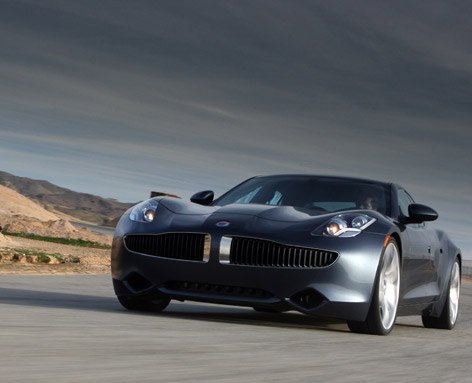#atvml
The Chrysler Coincidence: Bailout Loan-Shuffle To Help Fund Fiat Takeover
Back in November of 2009, when GM announced that it would repay its government loans, it didn’t take much investigation to realize that The General was simply shuffling government money from one pocket to the other and that true “payback” was still a ways off. The New York Times asked me to write an op-ed on the subject, and I took the opportunity to point out the reality of the situation and note
G.M.’s global interests are far too diverse for it to serve its taxpayer owners faithfully, and it can’t afford to subjugate its business prerogatives to the political needs of its major shareholder in the White House. So, unless Americans develop a sudden obsession with G.M.’s $40,000 Volt electric car just in time for an I.P.O., taxpayers will be stuck with tens of billions of dollars in losses.
Afterward, while our government contemplates its runaway deficit and getting rid of its 8 percent of Chrysler’s equity, perhaps we’ll get an admission that General Motors still owes the American people. Without one, the relationship between the public and the automaker, and the Obama administration as well, may never be the same.
And now that our government finds itself “contemplating a runaway deficit and getting rid of its 8 percent of Chrysler’s equity,” would you believe that a similar federal money-shuffle is under way? Believe it.
Aptera Unveils "Design Intent" 2e, Financial Woes
Are there two sadder words in the world of car design than “design intent”? Translated, the term actually means “the inevitable letdown after months (or years) of hype based on a buffed-and-polished prototype.” And for upstart California EV outfit Aptera, a slick, otherworldly prototype was a key to being taken even remotely seriously. Unfortunately, yesterday’s unveiling of the “design intent” Aptera 2e revealed a cheaper, droopier version of the vehicle Aptera had been collecting deposits on the strength of. Don’t believe us? Check out a gallery of prototypes after the jump, and compare for yourself. Besides, the vehicle wasn’t the only ugly part of Aptera’s presentation…
Where Are Those DOE Retooling Loans Anyway?
With a mere $9b awarded so far, the Department of Energy’s Advanced Technology Vehicle Manufacturing Loan program is a long way from fulfilling its $25b promise to fund a turnaround in America’s green auto sector. So far, Ford has received $5.9b for a wide range of retooling projects (not a bailout, per Ford PR), Nissan has received $1.6b for Leaf production in Smyrna, TN, while startups Tesla and Fisker have received $465m and $529m respectively. According to the Detroit News, the rest of the 100-odd applicants for the $25b pool are stuck waiting, and with about $42b in total pending requests, not everyone is going to get a rose from the Feds. Predictably, the whining has begun.
Fisker Parts Ways With Ener1, Hooks Up With A123
Battery firm Ener1/EnerDel, which recently brought the EV firm Th!ink back from bankruptcy, has lost the battery contract for Fisker’s Karma luxury EV. According to Schaeffersresearch, Ener1 “decided it would be better pursuing higher-volume battery supply deals when larger automakers begin rolling out their versions of electric cars.” Says Ener1 CEO Charles Gassenheimer, “we have some capacity constraints on our side. We’re interested in high volume programs in the future.” The public story is that due to Ener1’s Th!nk tie-up, Fisker’s October sales roll-out was too much, too soon. The real story illustrates the complicated relationships emerging between EV firms and battery suppliers.
Siry Slams DOE Loan Program For "Stifling Innovation"
Former Tesla PR honcho Daryl Siry lays into the Department of Energy’s Advanced Technology Vehicle Manufacturing Loan program (ATVML) at Wired’s Autopia blog, taking the $25b program to task for “stifling innovation.” At its core, his argument is a simple one:
Startup companies that enjoy DOE support, most notably Tesla Motors and Fisker Automotive, have an extraordinary advantage over potential competitors since they have secured access to capital on very cheap terms. The magnitude of this advantage puts the DOE in the role of kingmaker with the power to vault a small startup with no product on the market -– as is the case with Fisker — into a potential global player on the back of government financial support.
As a result, the vibrant and competitive market for ideas chasing venture capital that has been the engine of innovation for decades in the United States is being subordinated to the judgments and political inclinations of a government bureaucracy that has never before wielded such market power.
All of which sounds very TTAC… in fact, our lengthy Bailout Watch series began with a similar analysis of the ATVML program (albeit with a Detroit-focused twist). Unfortunately, Siry’s intentions in this case are questionable… as are his conclusions.



















Recent Comments